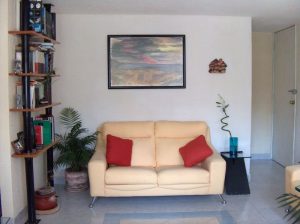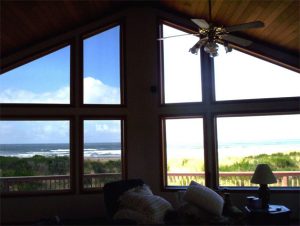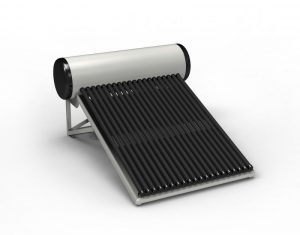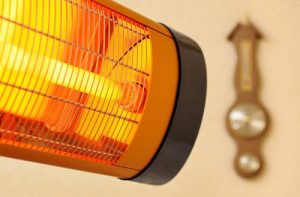LED lights: The material of LED lights affects the performance and life of LEDs
LED lights have become the talk of the hour today. And why not? LED lights are a tremendous alternative to the conventional incandescent lights that were being widely used until the arrival of the LED lights in the picture. LEDs have longer lives than incandescent lights. In fact, some LED types last for as long as 100000 hours (11 years and a half) compared to a very small life of an incandescent bulb. They are also more efficient as their consumption of electricity is lesser than the incandescent bulbs.
A major decision while buying LED lights
One’s biggest concern while buying a LED light, or any other appliance for that matter, is its life. “For how long this LED light function properly?” is a question which invariably pops up. Heat sinks of LED lights play a major role in the life of the LED light. Heat sinks are placed at the back of the LED lights. So one might also think, “Why do I have to bother about what’s at the back if I have my LEDs working properly?”
In fact, the thing which is at the back (heat sink), is the most important aspect of the lifetime of a LED light. The heat sink (or the material of the heat sink) directly affects the life of the LED light. Let us understand how.
Wastage of electrical power: LEDs vs incandescent bulbs
When electricity passes through a LED light, some of the electrical energy is converted to heat energy and a large part into the light energy. And in case of incandescent bulbs,only 10% electrical energy is converted to light energy and the rest of the energy is converted to heat.
This is quite undesirable as not only the electricity is wasted in the conversion of heat, but also the heat thus emitted is responsible for significantly reducing the efficiency of the LED light, that is, it reduces the ability of the LED to convert electrical power to visible light which is called luminous performance. It is measured in (lumens/watts).
Heat sink of a LED light
In order to arrest the decrease in the efficiency of LED lights caused due to the heat which is produced in the casing of the LED lights, heat sinks are used.
What is a heat sink?
You must have seen water sinks/basins in your bathroom. What do they do? They remove the excess water in the container thus facilitating a smooth and continuous flow of water in it. A heat sink works in a similar manner. A heat sink is something which acts as a sink to remove the heat from a system. So in a LED light, when heat is produced from the LED, the heat sink removes the heat from it thereby ensuring continuous removal of heat from the system and bettering the efficiency of the LED light.
Factors on which the performance of a heat sink depends
Since heat sink absorbs heat from the LED light and dissipates it outside, there are a couple of factors which effect the performance of a heat sink.
1. Size of the heat sink: Since heat transfer from the LED light to the surroundings take place at the heat sink, it is advised that the surface area of the heat sink is large. Higher surface area of a heat sink can be achieved by increasing the number of fins in the heat sink, or by increasing the overall size of the heat sink as well.
2. Finishing of the surface of the heat sink: If a heat sink with a painted surface is used, the amount of dissipation of heat is improved. This effect is even more pronounced when the transfer of heat is done by radiation of heat to the outside.
3. Orientation of the LED with respect to the heat sink: The orientation of the LED light source with respect to the heat sink also has an effect on the performance of the heat sink.
4. Material of the heat sink: This is one of the most important factors which is directly responsible for the performance of the heat sink. Let us try to understand how-
Material used to make a heat sink
A heat sink basically transfers/dissipates the heat from the heat from within the LED light source to the outside medium. It can do this in three ways:
1. Conduction (where heat is transferred from one solid medium to the other)
2. Convection (where heat is transferred from one solid to a moving fluid, for example-air)
3. Radiation (where heat transfer takes place between two objects having different surface temperatures)
Now the million dollar question: Which material should be used for heat sinks?
The material of the heat sink plays an instrumental role in determining the efficiency of a heat sink. This is because the thermal conductivity of the material that is being used to make the heat sink directly affects the dissipation capacity of the heat sink.
For such a role, one would like to go for something which has high thermal conductivity. Copper is an element which has very high thermal conductivity i.e. it is a good conductor of heat. But the demerit of using copper is it is quite expensive. Some people also use stainless steel for this purpose as it is thought that it does not corrode. But the problem with stainless steel is that it is not a good conductor of electricity, thereby is not a good choice.
Another choice for the material of the heat sink can be aluminium. It has a decent heat conduction capacity (better than stainless steel but lesser than copper) and is relatively inexpensive. In fact aluminium is the most commonly used material for making heat sinks as it is cheap as well as a good conductor. Most luminaries in the market have aluminium heat sinks. It is thus the most preferred material.
Thermoplastics is a new innovation in the field of heat sink materials. It is a specially engineered plastic which is a good conductor of heat and a low production cost. Although the conduction of heat in thermoplastics is not as high as it is in metals, but it is in accordance of the amount of heat produced in a LED system. In other words, it is well-suited for meeting the heat dissipation requirements of a LED light. In contrast to aluminium, the radiation ratio in thermoplastics is 7%-8% higher and the manufacturing cost in thermoplastics is 20%-30% lower. Please Note: Thermoplastics are different from regular plastics and regular plastics should not be used to make heat sinks as it will not provide good life to LEDs.
Some good LED Lights on Amazon
Best Tubelights in India
 wipro Garnet 20W LED Tubelight (White, D532065)
wipro Garnet 20W LED Tubelight (White, D532065)
 Philips Twinglow 20-Watt +20-Watt Led Up-Down Batten Tubelight (Yellow Uplight Relax Mode and White Downlight Work Mode) Aesthetic Design, Ambience of Downlight & Covelight from Tubelight
Philips Twinglow 20-Watt +20-Watt Led Up-Down Batten Tubelight (Yellow Uplight Relax Mode and White Downlight Work Mode) Aesthetic Design, Ambience of Downlight & Covelight from Tubelight
 PHILIPS 36W Cool White LED Tubelight, Pack of 1, (919515813613_1)
PHILIPS 36W Cool White LED Tubelight, Pack of 1, (919515813613_1)
 PHILIPS 30W White LED Tubelight, Pack of 2 (8718696168684)
PHILIPS 30W White LED Tubelight, Pack of 2 (8718696168684)
 PHILIPS 20W LED Cool White Tubelight, Pack of 2, (919515812614_2)
PHILIPS 20W LED Cool White Tubelight, Pack of 2, (919515812614_2)
 PHILIPS Mirolta Pro r16 36 Watts LED Batten - High Power High Performance Tube Light - Cool Day Light, Pack of 1
PHILIPS Mirolta Pro r16 36 Watts LED Batten - High Power High Performance Tube Light - Cool Day Light, Pack of 1
Best LED B22 Bulbs in India
 Philips Stellar Bright 10W B22D LED T-Bulb, Cool Day Light, Pack of 3
Philips Stellar Bright 10W B22D LED T-Bulb, Cool Day Light, Pack of 3
 Philips 9-Watts Multipack B22 LED Cool Day White LED Bulb, Pack of 4, (Ace Saver)
Philips 9-Watts Multipack B22 LED Cool Day White LED Bulb, Pack of 4, (Ace Saver)
 PHILIPS 12W LED Emergency Bulb, Emergency Bulb For Home, Cool Day Light, Pack of 1, B22
PHILIPS 12W LED Emergency Bulb, Emergency Bulb For Home, Cool Day Light, Pack of 1, B22
 wipro 10W B22D LED Cool Day White Bulb, Pack of 4 (Garnet)
wipro 10W B22D LED Cool Day White Bulb, Pack of 4 (Garnet)
 PHILIPS Wiz Wi-Fi Enabled B22 9-Watt LED Smart Bulb, Compatible with Amazon Alexa and Google Assistant(16M Colours +Shades of White + Dimmable + Tunable),Pack of 1
PHILIPS Wiz Wi-Fi Enabled B22 9-Watt LED Smart Bulb, Compatible with Amazon Alexa and Google Assistant(16M Colours +Shades of White + Dimmable + Tunable),Pack of 1
 Philips 9-Watts B22D LED Warm White(Golden Yellow) LED Bulb, Pack of 2, (Ace Saver)
Philips 9-Watts B22D LED Warm White(Golden Yellow) LED Bulb, Pack of 2, (Ace Saver)
Best LED E14 Bulbs in India
Best LED E27 Bulbs in India
 PHILIPS 9 Watts e27 Ace Saver LED Bulb (Golden Yellow )- Pack of 2
PHILIPS 9 Watts e27 Ace Saver LED Bulb (Golden Yellow )- Pack of 2
 Philips 9-Watts E27 LED Warm White LED Bulb, Pack of 1, (Ace Saver)
Philips 9-Watts E27 LED Warm White LED Bulb, Pack of 1, (Ace Saver)
Best LED Panel Lights in India
 Crompton Recessed Eco 6-Watt Round LED Panel Light (Cool Daylight)
Crompton Recessed Eco 6-Watt Round LED Panel Light (Cool Daylight)
 Crompton Recessed Eco 18-Watt Square LED Panel Light (Cool Daylight)
Crompton Recessed Eco 18-Watt Square LED Panel Light (Cool Daylight)
 Crompton LSDRMN-NW-Pro2 Slim Flat 15-Watt LED Panel Light Combo (Pack of 2, Natural White, Round)
Crompton LSDRMN-NW-Pro2 Slim Flat 15-Watt LED Panel Light Combo (Pack of 2, Natural White, Round)
 Crompton Plastic Recessed Eco 12-Watt Square Led Panel Light (Warm White)
Crompton Plastic Recessed Eco 12-Watt Square Led Panel Light (Warm White)
 Crompton Plastic Recessed Eco 6-Watt Square Led Panel Light (Warm White)
Crompton Plastic Recessed Eco 6-Watt Square Led Panel Light (Warm White)
 Crompton Recessed Eco 18-Watt Round LED Panel Light (Cool Daylight)
Crompton Recessed Eco 18-Watt Round LED Panel Light (Cool Daylight)
References:
http://www3.nd.edu/~leds/how/How.htm
http://www.lrc.rpi.edu/researchareas/leds.asp
http://www.lrc.rpi.edu/programs/solidstate/cr_thermalresistance.asp
http://en.wikipedia.org/wiki/Thermal_management_of_high-power_LEDs

























